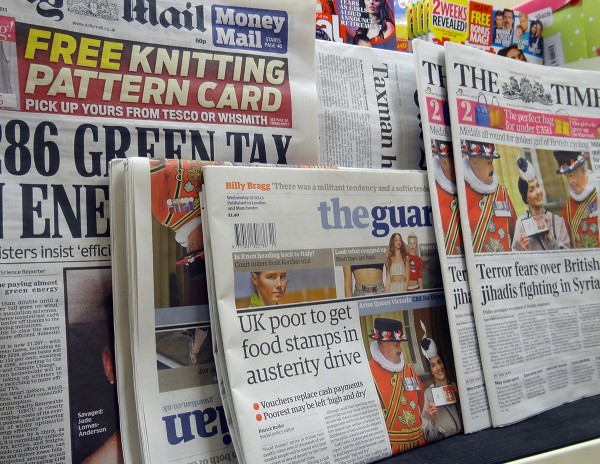 Why are 43 companies in the pub and restaurant sector in the UK donating over a £1 million to an 86 year old Frenchman who claims to work a 70 hour week? Jacques Borel has led an interesting and varied life which has included activities such as helping the French resistance in the 2nd world war and opening the first take-away hamburger restaurant in France in 1961. In 2001 he started a campaign to get the European Union to allow member states to reduce the rate of VAT applied to food and drink sold in the pub, hotel and restaurant industry. Organisations such as JD Wetherspoon, Heineken and Pizza Hut are backing his attempts to persuade the UK government of the benefits of this policy.
Why are 43 companies in the pub and restaurant sector in the UK donating over a £1 million to an 86 year old Frenchman who claims to work a 70 hour week? Jacques Borel has led an interesting and varied life which has included activities such as helping the French resistance in the 2nd world war and opening the first take-away hamburger restaurant in France in 1961. In 2001 he started a campaign to get the European Union to allow member states to reduce the rate of VAT applied to food and drink sold in the pub, hotel and restaurant industry. Organisations such as JD Wetherspoon, Heineken and Pizza Hut are backing his attempts to persuade the UK government of the benefits of this policy.
VAT is paid when goods and services are purchased and is normally included in the price advertised by the seller. It generates a significant amount of money for the UK government and it is estimated that it will raise £102 billion in 2012-13 – the third biggest source of revenue after income tax and national insurance contributions. It is applied at three different rates in the UK – a standard rate of 20%, a reduced rate of 5% and a zero rate i.e. 0%. This may sound straightforward but in reality the tax is extremely complicated as previously discussed in articles on this website . For example most basic or staple items of food sold in shops are zero rated. However there are some rather bizarre exceptions. For example a packet of potato crisps is subject to the standard rate of VAT whereas tortilla chips are not. The standard rate is applied to a packet of Wotsits whereas a zero rate is applied to a packet of Skips!
The campaign headed by Mr Borel focuses on the discrepancy between the zero-rate applied to most food items purchased from a shop and the standard rate applied to food purchased in restaurants or cafes. For example, if you buy a Pizza from a supermarket then you don’t pay any tax on this purchase, whereas if you eat a pizza in a restaurant the standard 20% rate of VAT is applied. Mr Borel is lobbying the UK government to reduce the rate of VAT paid in pubs and restaurants from the standard rate of 20% to the reduced rate of 5%. One reason why so many UK companies are willing to offer him financial support is because of his success in getting governments in other countries such as Germany, Belgium, Finland and France to adopt this policy.
In a recent radio interview Mr Borel was asked to make his case for the proposed reduction of VAT in the UK. He claimed:
I have a commitment from 125 chains of hotels, restaurants and independents to use 60% of the reduction in VAT to lower prices so that would be a 7.5% decrease in price. When you decrease price by that magnitude you will see an increase in customers of 10-12% and you will be forced to hire new staff. In our best case scenario, we plan to create 670,000 jobs in three years.
When asked in another interview why the hospitality sector should be favoured more than others he replied that:
It would create more jobs in a minimal amount of time…you cannot do that with any other industry.
One obvious drawback of the policy would be the loss of revenue for the UK government. Some estimates have suggested that the loss of VAT receipts would be between £5.5 and £7.8 billion. However it has been claimed that over time the impact of the change on government finances would be zero. In response to the proposed tax cut a Treasury spokesman commented:
Any reduced rates would make a significant impact on revenue and, as a significant proportion of spending in these areas is by UK residents, any increase in activity in these areas would largely be at the expense of other consumer spending.
Webcast
 Jacques Borel: VAT cut for pubs Morning Advertiser on YouTube (18/5/11)
Jacques Borel: VAT cut for pubs Morning Advertiser on YouTube (18/5/11)
Articles
Industry VAT campaigner Jacques Borel appears on Radio Four’s Today and Radio Five Propelinfo (24/4/13)
French veteran in fight to cut pub VAT Financial Times, Christopher Thompson (5/6/12)
The fiscal impact of reduced VAT rates VAT Club Jobs (22/4/13)
Pub and restaurant groups pay 86-year-old Frenchman £1m to convince UK government to cut VAT The Mail on Sunday, Sarah Bridge (20/4/13)
French veteran seeks British jobs boost with VAT Reuters (17/1/13)
Questions
- In his radio interview Jacques Borel claims that if firms pass on 60% of the cut in VAT this would cause a 7.5% reduction in prices. Explain why this is the case. Clearly outline any assumptions you have made in the analysis
- If 60% of the reduction was passed on by firms through lower prices, what do you think would happen to the money generated from the other 40% of the reduction?
- Using a demand and supply diagram illustrate the proposed reduction in the rate of VAT on the hospitality industry. Make sure your diagram is drawn in such a way that it clearly illustrates producers passing on 60% of the tax reduction in the form of lower prices.
- Assuming that the hospitality industry was very competitive, what impact would a reduction in VAT have on consumer surplus, producer surplus and deadweight welfare loss?
- Explain any assumptions you have in your answer to question 3 about the price elasticity of demand and supply.
- Using the figures provided in the radio interview is it possible to calculate the price elasticity of demand. Try making the calculation and clearly explain any assumptions you have made.
- Explain why the reduction in VAT might have no net effect on government finances in the long run?
- What factors determine the price elasticity of supply? What assumption is Mr Borel making about the price elasticity of supply in the hospitality industry compared to other industries when he makes the claim that jobs would be created quickly?
- Outline some of the arguments against cutting the rate of VAT.
 Technology and the Internet have both good and bad sides, whether it’s for businesses or consumers. Many opportunities have been created, such as access to global markets, cheaper and easier transport and communication and better sources of supply. But with this opportunity comes threats, especially for businesses. We’ve seen the emergence of new online-based companies and in some cases these have contributed to the demise of other firms. In this News Item we look at the impact on the newspaper industry.
Technology and the Internet have both good and bad sides, whether it’s for businesses or consumers. Many opportunities have been created, such as access to global markets, cheaper and easier transport and communication and better sources of supply. But with this opportunity comes threats, especially for businesses. We’ve seen the emergence of new online-based companies and in some cases these have contributed to the demise of other firms. In this News Item we look at the impact on the newspaper industry.
Media is one industry that has been significantly affected by technological developments. Newspaper readership has been in decline for many years and this is even the case for the most widely read UK paper – The Daily Telegraph. However, according to Seamus Dooley, Irish secretary of the National Union of Journalists, it’s not the end of the industry:
It is an industry in crisis, but I don’t accept it is an industry in terminal decline.
More and more information has become freely available online and just as we would expect in any other sector, the newspaper industry has had to respond. To keep their readers, newspapers across the world provide thousands of articles on all topics on their websites. But if news can be accessed freely, why bother purchasing a newspaper? This is the problem facing the Daily Telegraph, the Independent, the Daily Mail etc – the number of newspapers sold has declined and thus so have revenues and profits.
 One option is to charge consumers for reading the news by introducing a subscription to the online articles. The Financial Times already charges a fee to view articles online beyond a certain number and The Telegraph is soon to follow suit. Back in 2010, The Times and Sunday Times launched their new websites, which charged readers for viewing articles. The model being adopted by The Telegraph is a little different, as a certain number of articles can be viewed for free before a price must be paid. International readers are already charged to view online material, but these new charges will apply to UK readers. With so much competition facing newspapers, the number of readers for The Telegraph will undoubtedly decline, but with newspaper readership falling, revenues must come from somewhere. Tony Gallagher has said:
One option is to charge consumers for reading the news by introducing a subscription to the online articles. The Financial Times already charges a fee to view articles online beyond a certain number and The Telegraph is soon to follow suit. Back in 2010, The Times and Sunday Times launched their new websites, which charged readers for viewing articles. The model being adopted by The Telegraph is a little different, as a certain number of articles can be viewed for free before a price must be paid. International readers are already charged to view online material, but these new charges will apply to UK readers. With so much competition facing newspapers, the number of readers for The Telegraph will undoubtedly decline, but with newspaper readership falling, revenues must come from somewhere. Tony Gallagher has said:
We want to develop a closer rapport with our digital audience in the UK, and we intend to unveil a number of compelling digital products for our loyal subscribers in the months ahead.
Differentiating the product is going to be essential for any newspaper that begins charging, as with so much information available online for free, they have to ensure they keep their readers. Establishing loyalty will be crucial. The following articles consider this change.
Telegraph extends paywall to UK readers BBC News (26/3/13)
The Telegraph: subscribe to Britain’s finest journalism The Telegraph (26/3/13)
Telegraph to put up metered paywall Guardian, Roy Greenslade (26/3/13)
The sun joins Telegraph in charging website users The Guardian, Lisa O’Carroll and Roy Greenslade (26/3/13)
Oh how Times are charging Sloman News Site March 2010
Telegraph introduces UK paywall Marketing Week, Lara O’Reilly (26/3/13)
Washington Post announces porous paywall Journalism.co.uk, Sarah Marshall (19/3/13)
Washington Post latest newspaper to put faith in paywalls The Guardian, Dominic Rushe (19/3/13)
Ireland’s newspapers suffer hard times Financial Times, Jamie Smythe (24/3/13)
Washington Post to start charging for website Wall Street Journal, Keach Hagey (18/3/13)
Questions
- Where would you put newspapers on the product life cycle? Explain your answer.
- How would you assess the effect of the development of technology and the internet for newspapers?
- Have readers of newspapers benefited from the internet?
- How might estimates of elasticity have been used to make the decision to charge to view online articles?
- Which consumers will be affected most by this new strategy?
- How might companies that don’t charge for online access benefit from this new strategy?
- Would you continue to read articles from The Times, the Financial Times, The Telegraph, etc. linked from this site if you had to pay to access them? If so, why? If not, why not?
- How much would you be prepared to pay to access online articles? How are the concepts of utility and consumer surplus relevant here?
- What effect will the paywall have on The Telegraph’s revenues and profits? Use a diagram to illustrate your answer.
 In the blog A surprising rise we analysed the recent trends in the housing market. In August house prices increased the fastest since January 2010 and this left the average UK house price at just under £165,000.
In the blog A surprising rise we analysed the recent trends in the housing market. In August house prices increased the fastest since January 2010 and this left the average UK house price at just under £165,000.
Whilst this has still meant getting on the property ladder is only a dream for many, for those wishing to buy in London, they will, on average, need to find £368,000. London wages are significantly higher than in the rest of the country, so it is hardly surprising that average house prices are too.
However, an average London wage won’t get you close to the following property! With a reported asking price of £300m, it would be the highest priced house ever sold in London. Undoubtedly, you get a fair amount for your money, including 45 bedrooms and 60,000 square feet, but is this worth £300m? A property expert believes that it will be sold privately, not publicly, as it is such a rare property and that naturally, there will only be a few potential buyers!!

So, who are the likely buyers? You won’t be able to walk into a local estate agent and ask for a viewing. Only certain people with the funds to spare are being offered it. Many foreigners have been purchasing property in London, looking for a safe investment, with the trouble in Europe. This has led to London property prices rising very rapidly. But surely £300m is a little over the top! Assuming the asking price is paid, in order for a potential buyer to get any consumer surplus, he or she would have to value the property at significantly more than £300m – especially as stamp duty of approximately £21m would have to be paid.
The following few articles look at this record property price. (By the way, the house in the picture at the top of this blog is not the house that’s for sale: it’s a girls’ school in Tetbury. I don’t know how much it’s worth!)
London’s most expensive house yet, at £300m? BBC News, Ian Pollock (13/9/12)
London mansion on sale for record £300m Telegraph, Matthew Sparkes (13/9/12)
Money’s not too tight for buyer of £300m London mansion Guardian, Esther Addley and Yasmin Morgan-Griffiths (13/9/12)
Questions
- Why are property prices in London so much higher than in other parts of the UK?
- Why is this property being sold privately not publicly, when selling publicly typically gains a higher price?
- How would an individual place a value on this property?
- What is consumer surplus and how would an individual calculate it?
- Could this record price for the property have a positive or adverse effect on property prices in other parts of London?
- Why is mortgage rationing unlikely to be a concern for this property!
 A recent post on this blog referred to what sounds a fascinating new book, What Money Can’t Buy: The Moral Limits Of Markets, by Michael Sandel. The Guardian also recently featured an extract from this book.
A recent post on this blog referred to what sounds a fascinating new book, What Money Can’t Buy: The Moral Limits Of Markets, by Michael Sandel. The Guardian also recently featured an extract from this book.
As the earlier blog post discussed, our lives are now dominated by markets. Economists typically believe markets are the best way to allocate resources as, if the market mechanism works correctly, the resulting equilibrium maximizes economic welfare as measured by the sum of consumer and producer surplus. In particular, all consumers that are willing to pay a price above the market price are able to buy the product.
Fundamental to the measurement of consumer welfare is the notion that consumers will be prepared to buy a product as long as their willingness to pay exceeds the price. It therefore follows that consumers are more likely to buy the product as the price falls and, if they do so, gain increasing surplus. However, the extract from Michael Sandel’s book provides a number of interesting examples which suggest that in some situations this might not be the case.
 One example concerns the storage of nuclear waste in Switzerland. When surveyed, 51% of the residents of the small Swiss village of Wolfenschiessen, said that they would be prepared to accept the waste being stored nearby. However, somewhat surprisingly, this figure fell to 25% when the residents were told that they would be compensated for the inconvenience. Furthermore, the figure remained at this low level even when the proposed compensation was increased to over £5000 per person.
One example concerns the storage of nuclear waste in Switzerland. When surveyed, 51% of the residents of the small Swiss village of Wolfenschiessen, said that they would be prepared to accept the waste being stored nearby. However, somewhat surprisingly, this figure fell to 25% when the residents were told that they would be compensated for the inconvenience. Furthermore, the figure remained at this low level even when the proposed compensation was increased to over £5000 per person.
Sandel argues that this is because, once compensation is introduced, financial incentives crowd out public spirit. He suggests that:
putting a price on the good things in life can corrupt them.
For economists, this potentially has important implications for how we evaluate market outcomes and our belief that the market equilibrium is always the optimal outcome. Furthermore, it suggests that in some circumstances allowing the market mechanism to allocate resources may not be the ideal solution.
Articles
What money can’t buy – review The Guardian, John Lanchester (17/05/12)
Michael Sandel: ‘We need to reason about how to value our bodies, human dignity, teaching and learning’ The Guardian, Decca Aitkenhead (27/5/12)
We must decide on the way we want to live now London Evening Standard, Matthew d’Ancona (23/05/12)
Questions
- How is consumer surplus calculated?
- How does the market mechanism allocate resources?
- How would you explain the responses of the residents in the Swiss village?
- Do you think the Swiss residents would respond in the same way if the compensation offered was increased even further?
- What type of products and services do you think might be less well suited to being provided by markets?
 How much value do you place on that wonderful long weekend that a Bank holiday brings? The extra lie in; the ensuing 4 day week; the time you spend with your family. Some would say it’s invaluable – you can’t put a price on it. But those some people would not be economists! Each Bank holiday is worth about £2bn – at least that’s how much it costs the economy.
How much value do you place on that wonderful long weekend that a Bank holiday brings? The extra lie in; the ensuing 4 day week; the time you spend with your family. Some would say it’s invaluable – you can’t put a price on it. But those some people would not be economists! Each Bank holiday is worth about £2bn – at least that’s how much it costs the economy.
According to the Centre for Economics and Business Research, if the UK got rid of its Bank holidays, GDP would increase by approximately £18bn.
Some businesses will do well out the Bank holidays, but according to the research, the sectors of the economy that suffer are far greater, causing losses in productivity and hence in GDP. Indeed, the extra Bank Holiday we had last year for the Royal Wedding is thought to have been part of the cause for the slow down in growth to 0.1% during the second quarter of 2011.
Based on this data, there are unsurprisingly concerns that the extra Bank holiday this year for the Queen’s Diamond Jubilee could also cost the economy. Not particularly good news, considering how vulnerable the economy currently is. Although the Queen’s Diamond Jubilee will undoubtedly generate huge amounts of spending, it is thought that this will be more than offset by the sectors that are expected to lose out because of the loss in working hours and hence productivity.
Given the cost of Bank holidays to the economy, the CEBR says that they should be spread more evenly throughout the year. Is this the solution &ndash if one is needed – or should they be abolished altogether! The following articles consider the issue.
Do we really need bank holidays? Asks CEBR Telegraph, Emily Gosden (30/10/11)
Bank holidays ‘cost economy £18bn’ Independent, John Fahey (9/4/12)
Bank holiday costs UK economy £2.3bn Sky News, Tadhg Enright (9/4/12)
Bank holidays ‘cost economy £19bn’ BBC News (9/4/12)
Bank holidays cost UK economy £18bn and ‘should be spread out’ Mail Online (9/4/12)
Questions
- How could we use marginal utility theory to measure the ‘value’ of a Bank holiday?
- Which sectors will generally benefit from Bank holidays?
- Which areas of the economy are likely to contribute towards lost output because of a Bank holiday?
- Why does CEBR suggest that spreading out Bank holidays more evenly across the year would be less costly for economic growth?
- How can the value of lost output during one day be calculated?
- Does a Bank holiday add to somebody’s well-being? How could we measure this?
 Why are 43 companies in the pub and restaurant sector in the UK donating over a £1 million to an 86 year old Frenchman who claims to work a 70 hour week? Jacques Borel has led an interesting and varied life which has included activities such as helping the French resistance in the 2nd world war and opening the first take-away hamburger restaurant in France in 1961. In 2001 he started a campaign to get the European Union to allow member states to reduce the rate of VAT applied to food and drink sold in the pub, hotel and restaurant industry. Organisations such as JD Wetherspoon, Heineken and Pizza Hut are backing his attempts to persuade the UK government of the benefits of this policy.
Why are 43 companies in the pub and restaurant sector in the UK donating over a £1 million to an 86 year old Frenchman who claims to work a 70 hour week? Jacques Borel has led an interesting and varied life which has included activities such as helping the French resistance in the 2nd world war and opening the first take-away hamburger restaurant in France in 1961. In 2001 he started a campaign to get the European Union to allow member states to reduce the rate of VAT applied to food and drink sold in the pub, hotel and restaurant industry. Organisations such as JD Wetherspoon, Heineken and Pizza Hut are backing his attempts to persuade the UK government of the benefits of this policy. Jacques Borel: VAT cut for pubs Morning Advertiser on YouTube (18/5/11)
Jacques Borel: VAT cut for pubs Morning Advertiser on YouTube (18/5/11)





